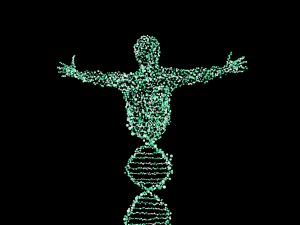By Sofie Bates

As tools to collect and analyze these data improve, the field of precision medicine aims to inform health decisions like never before, using each person’s unique profile to help health professionals provide earlier diagnoses and personalized treatment plans.
“I don’t think it’s overly ambitious to start thinking about reinventing medicine,” said Dr. Judy Cho, director of the Institute for Personalized Medicine at the Icahn School of Medicine at Mount Sinai in New York, at a Feb. 17 session during the American Association for the Advancement of Science (AAAS) annual meeting.
But to truly unlock the potential of precision medicine, researchers must develop innovative ways of synthesizing the information in ever-growing genomic databases.
Finding zebras among horses
Medical students learn about a host of diseases and illnesses, some very rare. But, in practice, medical professionals typically conclude that the most common diagnosis for a given set of symptoms is also the likely one for a patient exhibiting those symptoms.
“In the wards, you’re taught that if you hear hoofbeats, think horses not zebras,” Cho said.
Though this strategy is highly effective in most cases, it makes providing early diagnosis of rare health conditions much more difficult. That’s where having a big database of genetic markers and associated conditions would come in handy.
“There’s a real capacity for genetics to fundamentally change how we teach medical students and medical providers, and to more efficiently identify the zebras within the horses,” Cho said.
But, before medical providers can use genomic data to identify rare diseases in patients, researchers must establish strong correlations between what are known as genotypes — an individual’s DNA sequence — and phenotypes, the unique observable traits that arise from how an individual’s genes and environment interact.
Associating particular genotypes with phenotypes would enable health professionals to make inferences about a patient’s genetic variants based on physical traits, and vice versa. That in turn would allow the development of personalized treatment plans.
Linking genotypes to phenotypes
Biobanks — large collections of human data — may provide a practical link between massive amounts of patient health data and informative phenotypes. These biobanks contain blood and tissue samples, genomic data, and other biomarkers, along with individuals’ associated phenotypes.
“Biobanks are just collections of people,” said quantitative human geneticist Nancy Cox, director of the Vanderbilt Genetics Institute in Nashville, Tennessee. “[With biobanks,] we have people where we can study everything at once.”
Data within biobanks is made accessible to health professionals through electronic health records. Medical providers are able to search these records for specific characteristics, say, a genetic mutation or disease phenotype, to diagnose a condition and devise the best treatment plan for a particular patient.
Vanderbilt’s BioVU biobank has collected more than 250,000 DNA samples over the past 10 years. This allows health professionals to follow participants’ medical histories and allows researchers to analyze health trajectories over time.
In the future, patients with identified conditions may even use wearables, like the heart monitor in a smartwatch, to help doctors track relevant health data.
Genotype-phenotype association studies are another path toward demonstrating strong correlations between genomic data and physical traits. On a large enough scale, these correlations can allow health professionals to predict the most likely diagnosis or best treatment option for an individual, given his or her genomic data.
With this principle in mind, the Genes for Good project led by University of Michigan biostatistician Goncalo Abeçasis is crowdsourcing large datasets to help build stronger genotype-phenotype associations.
Abeçasis and colleagues asked Facebook users to answer questions about their health history, traits, and lifestyles. They then sent spit kits — simple tools for collecting DNA samples from saliva — to survey responders, and sequenced their genomes. As of Nov. 30, 2017, the team had analyzed 100,000 genomes.
Though there is still a long road ahead, projects like these aim to distill large genomic datasets into informative associations with great predictive power, bringing the promise of precision medicine much closer to reality.
“You can never have too much data,” Cox said. “The more data we have, the better off we are.”
Sofie Bates is a senior at the University of California, Davis, majoring in genetics and genomics and minoring in professional writing. She has written for the UC Davis student newspaper, the California Aggie. She is an undergraduate research assistant in biochemist David Segal’s lab, where she has written about and presented her research on epigenetic editing. Read her blog at sofiedoesscience.wordpress.com or follow her on Twitter @sciencesofie.
